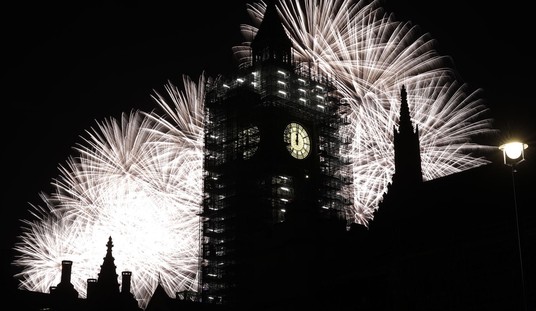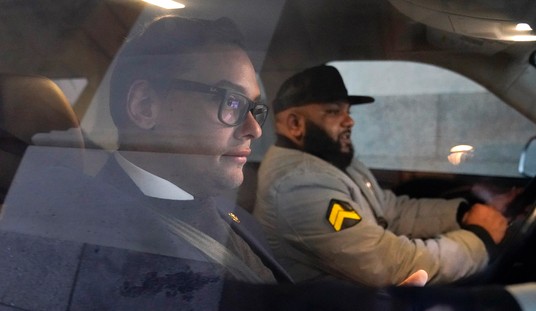“It’s a foretaste of things to come,” Princeton University professor Michael Oppenheimer told CNN. “Bigger storms and higher sea levels” will pile on to create a “growing threat” in the coming decades.
And New York, he warned, “is highly vulnerable.”…
Princeton’s Oppenheimer, a professor of geosciences, recently modeled the effect of climate change on storm surges for the New York area.
In a paper published by Nature in February, he and three colleagues concluded that the “storm of the century” would become the storm of “every twenty years or less.”
New York isn’t known for its hurricanes. At least, it never has been before. But after Irene in 2011 and Sandy in 2012, New York Gov. Andrew Cuomo said he joked to President Obama that “we have a 100-year flood every two years now.” Is it possible that climate change has somehow turned the Big Apple—and the northeast in general—into a hurricane hotspot?
Possible, perhaps. But the atmospheric scientists I’ve talked to say it would be misguided to conclude based on those two storms that the northeast is becoming a common destination for tropical cyclones…
“Every hurricane is a fluke, to some degree,” says Sobel. By that he means that any given storm’s path is determined more by the specific weather conditions at the time than by underlying climatic factors. While the connection between global warming and heat waves is relatively straightforward, the links between climate change and hurricanes are complex.
The hedge expressed by journalists is that many variables go into creating a big storm, so the size of Hurricane Sandy, or any specific storm, cannot be attributed to climate change. That’s true, and it’s based on good science. However, that statement does not mean that we cannot say that climate change is making storms bigger. It is doing just that—a statement also based on good science, and one that the insurance industry is embracing, by the way…
Here’s where climate change comes in. The atmospheric pattern that sent the Jet Stream south is colloquially known as a “blocking high”—a big pressure center stuck over the very northern Atlantic Ocean and southern Arctic Ocean. And what led to that? A climate phenomenon called the North Atlantic Oscillation (NAO)—essentially, the state of atmospheric pressure in that region. This state can be positive or negative, and it had changed from positive to negative two weeks before Sandy arrived. The climate kicker? Recent research by Charles Greene at Cornell University and other climate scientists has shown that as more Arctic sea ice melts in the summer—because of global warming—the NAO is more likely to be negative during the autumn and winter. A negative NAO makes the Jet Stream more likely to move in a big, wavy pattern across the U.S., Canada and the Atlantic, causing the kind of big southward dip that occurred during Sandy.
At first blush, it would seem that warmer seas would fuel more and stronger hurricanes, because tropical storms typically form and intensify when waters are at their peak temperatures. But in this case, nature is more complicated, and while warmer oceans may be more favorable in a warmer world, other factors appear to temper hurricane activity…
Here were the paper’s main conclusions:
After studying past and present hurricane data they did not conclusively find any detectable human influence on hurricane activity.
Studies indicate more likely than not an increase in the numbers of the more intense hurricanes globally, perhaps 2 to 11 percent by 2100.
Scientists also found increased evidence that, globally, the number of tropical storms is likely to decrease by 6 to 34 percent by 2100.
When it comes to policy responses, though, it doesn’t really matter exactly what role man-made climate change plays in amplifying storms. For one thing, we know that global sea level rise is happening, and we know that’s large due to man-made warming. And sea level in the Northeast seems to be rising three to four times faster than they are globally, which puts cities like New York—which has more than 580 miles of coastline—at enhanced risk. Storm surges and coastal flooding, rather than high-speed winds or drenching rain, proved to be Sandy’s real bane, with more than 12 ft. of flood water filling New York’s Battery Tunnel. Every subway tunnel beneath New York’s East River was flooded, leaving the system “devastated,” in the words of Metropolitan Transit Authority chairman Joseph Lhota…
We don’t demand absolute certainty before we take action in foreign policy, the economy or health. We’d be fools to wait until there’s perfect scientific consensus on the role that global warming may be playing in tropical storms before we take action to prepare for both. “Anyone who says there’s hasn’t been a dramatic change in weather patterns has been denying reality,” New York Governor Andrew Cuomo told reporters today.
NOAA’s Martin Hoerling rejects ‘Frankenstorm’ climate link: ‘This is not some spell conjured upon us by great external forces….unless you believe in the monster flicks of Universal Studios fame!’ — Meteorologist Hoerling of NOAA: ‘The immediate cause is most likely little more than the coincidental alignment of a tropical storm with an extratropical storm. Both frequent W. Atlantic in Oct….nothing unusual with that’…
Frankenscience: ‘Sandy doesn’t tell us anything about climate change’ — Prof. Pielke Jr.: ‘We’ve done long-term trends with respect to hurricane damage in the United States, and it’s very safe to say that regardless of how [Sandy] plays out, there’s a century-long time series with no trend in it — and that’s in damage, the number of landfalls, or the intensity of storms at landfall. So, if you are looking for signals of long-term climate change, focusing in on any one storm is the wrong way to go about it to begin with’…
Climatologist Dr. Patrick Michaels on Sandy: ‘It’s also consistent with a planet with colder temperatures as well as one with warmer ones’ — Michaels: ‘More important, events like this are inevitable on a planet that has an ocean with the geography of the Atlantic (meaning a Gulf Stream-like feature), a large north-south continent on its western margin without a transverse mountain range to inhibit the merger of tropical warmth with polar cold, and four seasons in the temperate latitudes’
I was schooled in the far-reaching changes under way several years ago by Eskimos in Alaska, who told me of their amazement at seeing changes in their Arctic village — from melting permafrost to robins (for which their Inupiat language has no word), and even a (shivering) porcupine. If we can’t see that something extraordinary is going on in the world around us, we’re in trouble…
There are no easy solutions, but we may need to invest in cleaner energy, impose a carbon tax or other curbs on greenhouse gases, and, above all, rethink how we can reduce the toll of a changing climate. For example, we may not want to rebuild in some coastal areas that have been hammered by Sandy…
Along with eight million others, the Kristofs have lost power, so I’ve been sending Twitter messages on my iPhone by candlelight — an odd juxtaposition that feels like a wake-up call. In the candlelit aftermath of a future hurricane, I’m guessing, we’ll look back at the silence about climate in the 2012 election and ask: “What were they thinking?”
Via Mediaite.








Join the conversation as a VIP Member